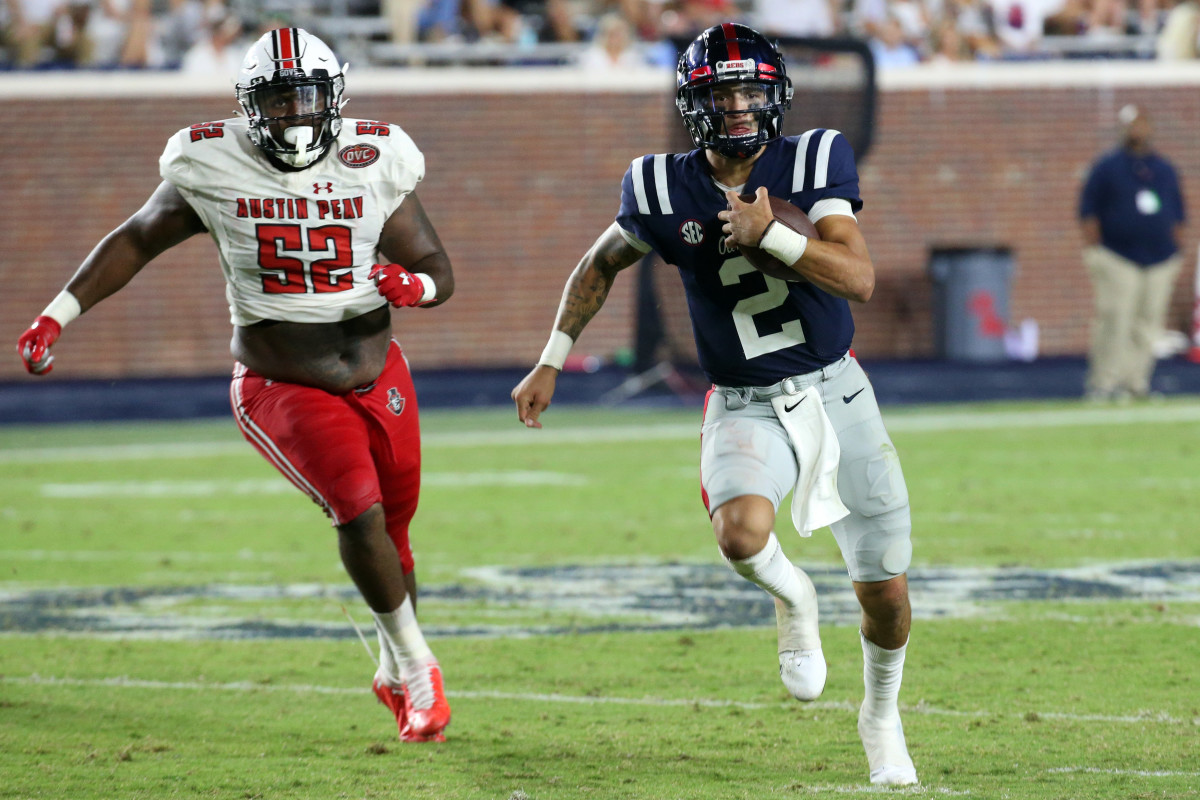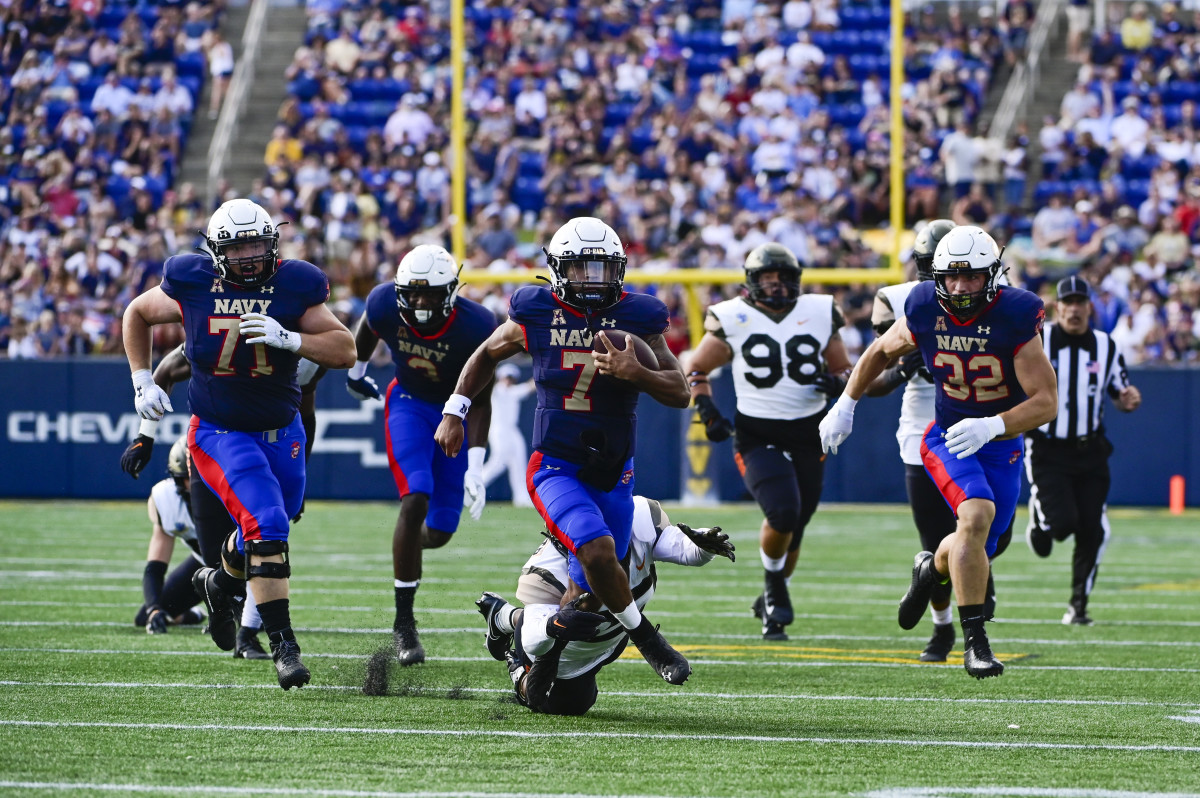The Daily Knight: The Best Option Quarterbacks and Why the Triple-Option Attack Still Works
ORLANDO - To understand the triple-option play, one must know a little bit about its history, as well as how it transformed over time. The players that truly looked like magicians as they faked and juked their teams down the length of the football field, that’s where it started.
When the Knights play Navy this Saturday, there will be a handoff or fake on almost every single play Navy runs. It’s intended to confuse; make no mistake about that. Here’s an overview of the option via podcast, and then onto more details about how the option works and some of the players and coaches that made it famous.
Triple-Option 101
Sometimes pictures are better than words. In this case, a video sets the best example. Just watch a few minutes of this instructional video. It shows Navy’s current option attack. It’s slightly varied from what Oklahoma did with the traditional wishbone, but it’s very much the same process. Pay close attention to the quarterback and fullback exchange. That’s the first key to understanding triple-option football.
Notice the smooth transition? When the quarterback stays in sync with his offensive line and fullback, it’s difficult to slow down a triple-option attack. Here are some of the all-time great triple-option quarterbacks, including a recent star from Navy that’s in the above video.
The Masters of the Triple-Option Play and its Transformation
Whether one prefers Tony Rice from Notre Dame (1986-1989), Tommie Frazier from Nebraska (1992-1995), Jamelle Holieway from Oklahoma (1985-1989), or one of the other dominant triple-option quarterbacks from 25, 30, or 35 years ago, there are still players that operate the same type of offense but not behind the name brands like Notre Dame, Nebraska and Oklahoma.
As college football and the option evolved, a different type of option quarterback came about, one that was still a master at running the football and could throw the football as well.
There was Vince Young at Texas (2002-2005), Pat White at West Virginia (2005-2008), Tim Tebow at Florida (2006-2009), and just this season the leading contender for the Heisman Trophy would be Ole Miss signal caller Matt Corral. He’s a versatile run-pass quarterback in his own right, already combining for nine passing and five rushing touchdowns in 2021.

The key with all of these players remains the same. They can read the defense, make an adjustment when needed, and then allow their athleticism to take over. It's just that now there's more passing involved with the option to provide a more balanced overall scheme. There are a few particular players and coaches that helped with that transition. So that leads to the question, when did the option really start blending with the passing game throughout college football?
When the Triple-Option Meshed with the Passing Game
Donovan McNabb played for Syracuse (1995-1999) long before he donned an NFL jersey with the Philadelphia Eagles and operated a pro-style passing attack. His time at Syracuse represented a good way to define how the triple-option morphed with drop-back passing.
The Orangemen, as they were then called, also possessed a dynamic passing attack in addition to running the option. McNabb could run and throw like few other players during his era of college football.
He also had a player like Marvin Harrison, the same wide receiver that went on to catch 112 touchdowns from Peyton Manning while both were members of the NFL’s Indianapolis Colts.
Perhaps that’s one of the reasons why a current NFL coach was so keen on trying his own version of option football and blending it with the passing game when he was an assistant, and then later as a head coach, within the college ranks.
What McNabb and Syracuse did helped to lead to what now Jacksonville Jaguars Head Coach Urban Meyer helped to first implement while at Notre Dame as an Assistant Coach for the Irish. He then went on to utilize option football at each of his other Head Coaching stops -- Bowling Green, Utah, Florida and Ohio State -- and that’s specifically the run-pass option that is popular throughout college football today.
It’s the same principle offensive philosophy that UCF Head Coach Gus Malzahn places into his offensive game plans each week. Option football can be accomplished from different formations and with different play designs.
Perry Provides a Recent Star, and Navy Looks for its Next Great Commander
There have been changes for many teams that still use the option, but Army, Air Force and UCF’s opponent this Saturday, Navy, still run true triple-option football.
It’s still one of the best plays in football, but takes a great deal of skill and dedication. In 2019, Navy quarterback Malcolm Perry ran for 2,017 yards and 21 touchdowns. Despite being 5’9”, 190-pounds, the diminutive Perry cut, juked and ran by numerous defenders that believed they were about to tackle him.

With Perry gone, Navy's attack is not quite the same. Can the Midshipmen get the option attack going again? That question lies at the feet of sophomore Xavier Arline because he's the man behind center for Navy. He may not be Perry, but he needs to help the Midshipmen be more dynamic in their attack. He also needs more consistency, and that's the bottom line with the triple-option.
The attention to detail, the timing that it takes, and understanding how to be an entire offensive unit working as one to run the football represents the true definition of the triple-option.
For UCF to defeat Navy this weekend, it will need to be as disciplined as the Midshipmen themselves. It’s a unique way of moving the football, and one that’s been around a very long time.
For UCF insights, college football news, and recruiting information go to: The Daily Knight podcast. It will be found on iTunes and Spotify. For more UCF and recruiting information, go to Twitter: @fbscout_florida and @UCF_FanNation, as well as my YouTube Channel and Instagram page. Like and Subscribe!
Recent Articles From Inside The Knights
UCF Special Teams, Going Unnoticed Can be Good
Predicting the Cincinnati at Notre Dame Outcome, with Trends and Matchups to Watch
The Daily Knight: UCF Offensive Play Calling and Key Matchups
SEC Game Predictions: Arkansas at Georgia and Ole Miss at Alabama
The State of Florida Recruiting Report
Public Perception of UCF Football: Winning Matters Before the Knights Join the Big XII
The Daily Knight: UCF's Defense Must Improve by Finalizing Plays
A Closer Statistical Examination of Navy's Defense
The Navy Offense, A Statistical Perspective and History Lesson
The Daily Knight: Why UCF Should Dismantle Navy
Videos and Press Conference Notes From Coach Malzahn, O'Keefe, and Armstrong
UCF QB Commitment Thomas Castellanos Shows Continued Improvement
With Mikey Keene Leading the Charge, it's Time to Prepare for Navy
Football and Community Come Together in Lake City
Mikey Keene's Former High School Head Coach Knows What UCF Football Fans Should Expect
Can UCF Compete with the SEC for Football Recruits?
Prospect Review: Jacksonville Trinity Christian at Lake City Columbia
Previewing Jacksonville Trinity Christian at Lake City Columbia
Coach Malzahn Will Find the Right Run-Pass Balance with Mikey Keene as UCF's Quarterback
Unsung Heroes: Without Recognition, The UCF Football Players that Help the Team be Successful
Breaking Down UCF Football's 2022 and 2023 Recruiting Situation
Utilizing the Skills of Joey Gatewood to Complement Mikey Keene
